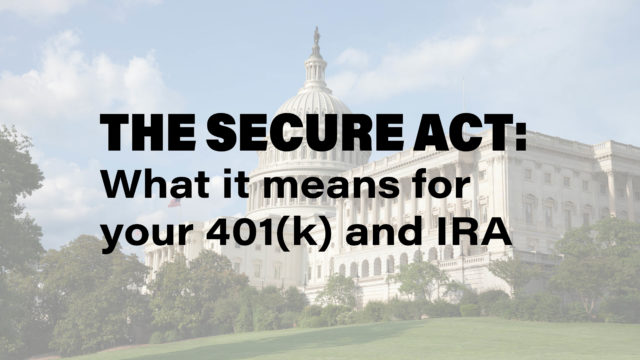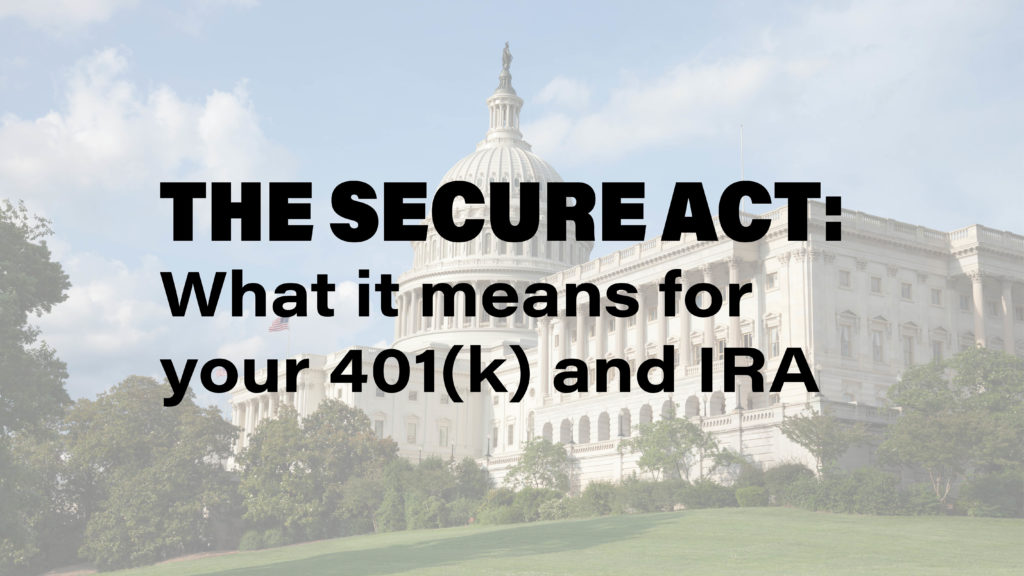Bulls Take The Reins to Santa’s Sleigh

December 20, 2019
‘Twas two trading sessions before Christmas and all through the Street, traders were cheering another record-setting week. The stockings were heavy with the year’s gains, with the S&P 500 adding another 1.65% this week to the year’s winnings. Economic data was light with U.S. existing home sales and housing starts mixed. Overseas, bulls cheered signs of global economic momentum as Chinese factory production and consumer spending figures beat expectations. With investors’ concerns over trade and global growth dissipating, investors look poised to settle for a strong market finish.
Homebuyers Stay Snug In Their Beds
With home prices high, homebuyers opted to stay inside. Existing home sales tumbled in November to a seasonally adjusted annual rate of 5.35 million. Supply constraints pushed the median home sales price up 5.40% from a year ago to $271,300. More prospective homebuyers have been opting out of buying a home as prices have risen due to tightening supply. The number of homes for sale priced below $100,000 fell -16%, while the number of homes priced between $100,000 and $250,000 fell -4%. Overall, inventory tightened for all segments, falling to 3.7 months, down from 3.9 months in October. In comparison, a six to seven months supply is considered to be a healthy balance between supply and demand. Tight inventory has lead to more clatter with homebuilders hammering way up on their ladders. Housing starts rose 3.20% to a seasonally adjusted annual rate of 1.365 million units in November. Permits for future construction surged to a 12 ½ year high. Single-family construction got a much needed boost, hitting a 10-month high. Year-over-year, housing starts are up a robust 13.60%. The momentum for the homebuilding sector should continue into next year, aided by tight inventory in the existing home sales market, low mortgage rates, and a robust jobs market.
China Poised to Kick Off Lunar New Year on a High Note
Although the Lunar New Year is still roughly a month away, Chinese businesses seem to be cranking up production in anticipation of a strong new year. An increase in manufacturing, mining, and utilities pushed industrial output up 6.20% year-over-year in November to a 5-month high. That was up from a 4.70% year-over-year increase in October. Chinese consumers were also out in full force in November, taking advantage of early holiday deals. Shoppers took to the internet for the country’s annual Singles Day shopping extravaganza, pushing Chinese e-commerce giant Alibaba’s sales up 26% year-over-year. Overall, the annual shopping holiday event helped drive Chinese retail sales up 8% from year ago levels compared to the 7.20% year-over-year increase in October. Chinese economic growth looks poised to gain momentum as a formal signing of a Phase 1 U.S.-China agreement appears to be in the works.
With no major economic releases this week, and investors’ holiday wish list of a U.S.-China Phase 1 trade deal and stabilization in global economic indicators checked off, market bulls appear content to push markets higher. The market cheer extended beyond the U.S. with Europe also getting in on the action after last week’s vote brought greater clarity to the UK’s exit from the EU. Europe’s benchmark Stoxx 600 posted its first record high in four years, putting it on track for its best performance in a decade. Absent any unexpected trade related news and with roughly 10 trading days left in the year, 2019 looks poised to end on a high note. Through Friday’s close, the S&P 500 is up 28.33% year to date. That would mark the index’s best one-year performance since 2013, leaving investors to bid 2019 a fond farewell.
The Week Ahead
Probity’s Week in Review will be taking a break for the holidays. Our next edition will arrive on January 10, 2020 with the latest figures on nonfarm payrolls and services. In overseas action, the Eurozone will release manufacturing and services numbers.
The SECURE Act Passes Congress
This week, the Senate approved a bipartisan appropriations bill that includes a piece of legislation called The SECURE Act, which stands for Setting Every Community Up for Retirement Enhancement. The bill passed the House with a 417-3 vote this past summer and passed the Senate yesterday with a 71-23 vote. President Trump is expected to sign the bill into law by midnight tonight, and the legislation will go into effect on January 1, 2020.

The SECURE Act does a number of things that affect retirement planning and estate planning for investors. It removes the stretch provision for Required Minimum Distributions (RMDs) from most Inherited IRAs where the original account holder passes away January 1 or later. RMDs are congressionally mandated distributions from a qualified retirement plan, such as a traditional IRA or Simplified Employee Pension (SEP) plan. Contributions to these types of accounts are not taxed until money is withdrawn, and assets in the plan grow tax-free as well. The funds are taxed at the owner’s income tax rate when they are distributed. Under the current law, beneficiaries of an inherited IRA can “stretch” distributions from the inherited account over the course of his or her lifetime, thus delaying taxes and benefiting from tax-deferred growth. Under the new law, many beneficiaries will have to take all RMDs of a retirement account within a 10-year period. From a planning perspective, investors should discuss with their advisor the tax impact of leaving IRAs and 401(k)s to beneficiaries, particularly if the beneficiary might be taking the distributions during their peak earning years which could bump them into a higher tax bracket.
Other provisions of The SECURE Act are intended to accommodate an American workforce that is working longer and delaying retirement. First, the bill pushes out the age at which individuals are required to start taking RMDs from age 70.5 to age 72. Second, the SECURE Act now allows those working past age 70.5 to contribute to qualified retirement plans.
The legislation is also intended to help small business owners and their employees. It eases some of the fiduciary rules and reduces the administrative burden associated with offering workplace savings plans. The legislation allows unrelated companies to pool together to offer workers a retirement plan. The bill also increases a tax credit for setting up a plan and offers a credit for plans that implement automatic enrollment for employee participants. Roughly 38 million employees of small and midsize companies do not have a workplace retirement plan, according to the U.S. Labor Department. In 2018, 53% of workers at companies with fewer than 100 workers had access to one, compared with 85% of workers at larger companies.
The bill is the largest retirement planning legislation in more than a decade. While it is intended to give a boost to Americans to save for retirement, it can add complexity for estate planning for families with significant wealth accumulation and larger inherited IRAs. If you have any questions about how the plan may affect you or your business, please feel free to call our office at (214) 891-8131.
